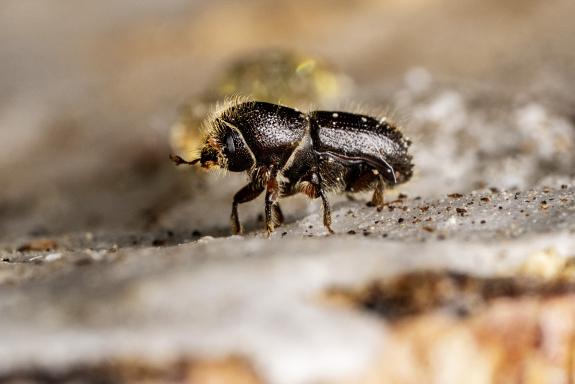This year, the Thuringian Forest is not the only one to be hit by a major bark beetle plague, which is causing many spruce trees to die and will ultimately change the entire forest ecosystem in the future. This is primarily due to drought, as a consequence of global warming, and the lack of diversity in most of our native forests. However, we also find time and again that there are still quite a few unanswered scientific questions about the fundamentals or basic questions of the actual bark beetle infestation, such as exactly which trees are infested and why.
In our department, we are trying to find the answers to precisely these questions. For example, we are investigating the exact relationships from the tree's point of view. We are interested in why, despite mass reproduction of the bark beetle ( Ips typographus), some spruce trees(Picea abies) in the forest are preferentially attacked and some are not attacked at all. For this purpose, we produce genetically modified trees and change the composition of the tree resin, which is the main defense mechanism of the spruce, as well as the bouquet, which plays a decisive role in finding attractive trees for the bark beetle. We then test in the laboratory how beetles react to these changes.
At the same time, we are also trying to gain new insights into the bark beetle. The beetle does not live alone but in symbiosis with a variety of microorganisms. For example, it harbors a large number of fungi on its body surface, which probably play an important role in the digestion of food. In addition, the beetle's gut contains a complex mix of special bacteria that primarily break down the tree's toxic antibodies and thus make the food more digestible for the beetle. In order to confirm these assumptions and ultimately better understand this complex system, we are trying to identify the chemical substances that play a role and are also carrying out tests on the behavior of beetles with both fungi and bacteria in our laboratories. In order to gain further insights into this symbiotic system of beetles, fungi and bacteria, we are also using the slightly larger and easier to keep spruce weevil(Hylobius abietis). Although this only feeds on the bark of young trees, it is probably equipped with a comparable community of fungi and bacteria, as it is confronted with the same substances and defenses of the tree as the spruce weevil.
In addition to the latest research results, the organisms to be studied, such as transgenic spruce, spruce bark beetle, spruce weevil and their fungi and bacteria, will be presented at our stand, as well as some of the experimental set-ups to be used for the tests in the laboratory.

